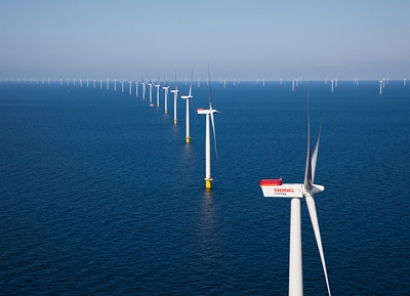
The report The South Carolina Jobs Project: A Guide to Creating Jobs in Offshore Wind provides policy recommendations that tap into South Carolina’s research expertise, manufacturing sector, and logistics infrastructure to help the state benefit from the burgeoning industry. It also outlines how South Carolina could spearhead its first offshore wind projects.
The research offers a much-needed economic development strategy that would create good-paying jobs, equip South Carolinians with critical workforce-ready skills, and re-engage eligible workers disconnected from education and employment opportunities. The state currently has the 45th-lowest labour force participation rate in the nation, and workforce barriers have contributed to a poverty rate of over 15 percent. Growing the state’s offshore wind industry is a promising economic driver.
“Jumpstarting South Carolina’s offshore wind conversation would position us to benefit from this quickly growing sector” said Paul Gayes, Executive Director of BCCMWS. “Right now, there are $56 billion committed to Atlantic Coast offshore wind projects. AJP’s report shows that we can leverage South Carolina’s industry strengths to provide support for these projects and nurture local projects that would grow the economy while meeting our energy needs.”
While offshore wind is increasingly becoming a mainstream and cost-competitive source of electricity in Northern Europe, until recently there has been little movement in the US In the past year, Atlantic coastal states have invested in the offshore wind sector, recognising its potential for meeting the region’s vast energy needs and clean energy goals. Experts predict the market will grow six-fold by 2030, making the sector a good bet for new industries in South Carolina.
Mary Collins, Managing Director of the American Jobs Project and co-author of the report, added that offshore wind could provide stable employment for hundreds of middle class workers while creating follow-on benefits for the broader labour market. South Carolina leaders could position the state as a pioneer in the regional market and put some of the first turbines into Southeast waters.
Based on extensive research and stakeholder outreach, The South Carolina Jobs Project finds:
The offshore wind industry could support an average of 847 in-state jobs each year through 2035. This figure includes jobs in the development, installation, and operation of offshore wind farms in South Carolina as well as component manufacturing for local and regional projects.
The industry is projected to grow 16 percent annually through 2030 due to falling costs and efficient electricity generation during peak demand.
South Carolina has the sixth-highest net technical offshore wind resource potential in the United States and could meet more than fifty times the state’s electricity needs with offshore wind.
South Carolina has cutting-edge offshore wind research expertise, including Clemson University’s drivetrain testing facility, which has attracted the likes of GE and MHI Vestas, and Coastal Carolina University’s ocean, atmosphere, and wave modeling and assessment.
The Palmetto State is home to many companies that could expand their in-state operations to support the offshore wind value chain, including fifteen active wind manufacturing facilities, global industry leaders like Siemens and Timken, and cable manufacturers Nexans and Prysmian Group.
South Carolina has a competitive edge in offshore wind manufacturing and deployment due to synergy with existing in-state industries including automotive instrumentation, advanced composites, shipbuilding, and logistics.
The report provides tailored strategies that take advantage of this economic opportunity and build up critical assets for industry growth in South Carolina, including the innovation ecosystem, access to capital, workforce development, value chain, and local market. Recommendations include:
Fostering the commercialisation culture at universities to help homegrown innovations play a larger role in the global economy;
Expanding the Angel Tax Credit and the SC Launch program to bolster access to capital for South Carolina’s early-stage startups;
Leveraging integrated basic education and skills (I-BEST) programs at technical colleges to address the STEM skills gap and boost manufacturing employment;
Assessing the offshore wind readiness of South Carolina’s ports to support current and future offshore wind industry needs; and
Highlighting offshore wind as a potential tourist attraction to allay public fears and catalyse project development.
For additional information:
Report The South Carolina Jobs Project: A Guide to Creating Jobs in Offshore Wind
The Burroughs and Chapin Center for Marine and Wetland Studies

